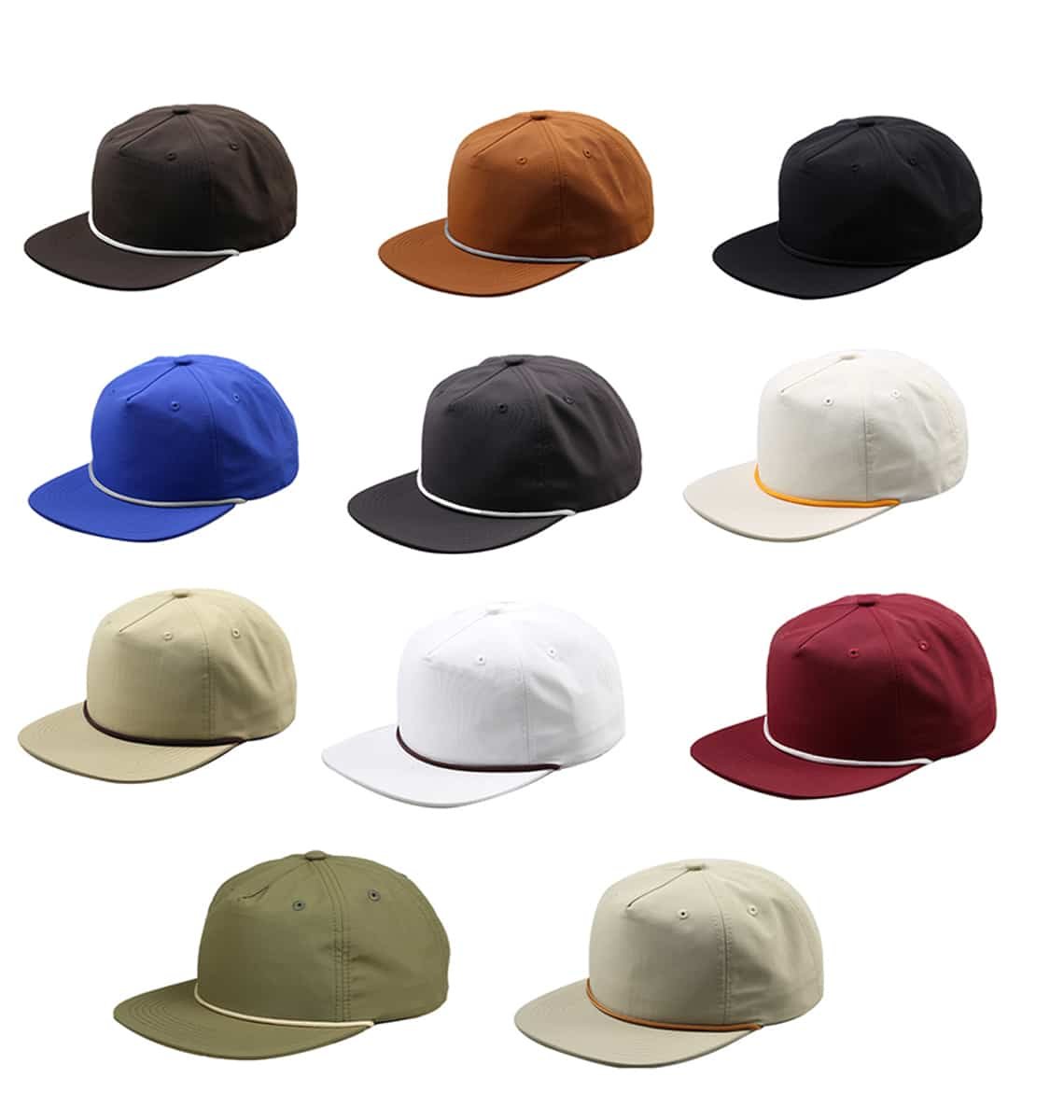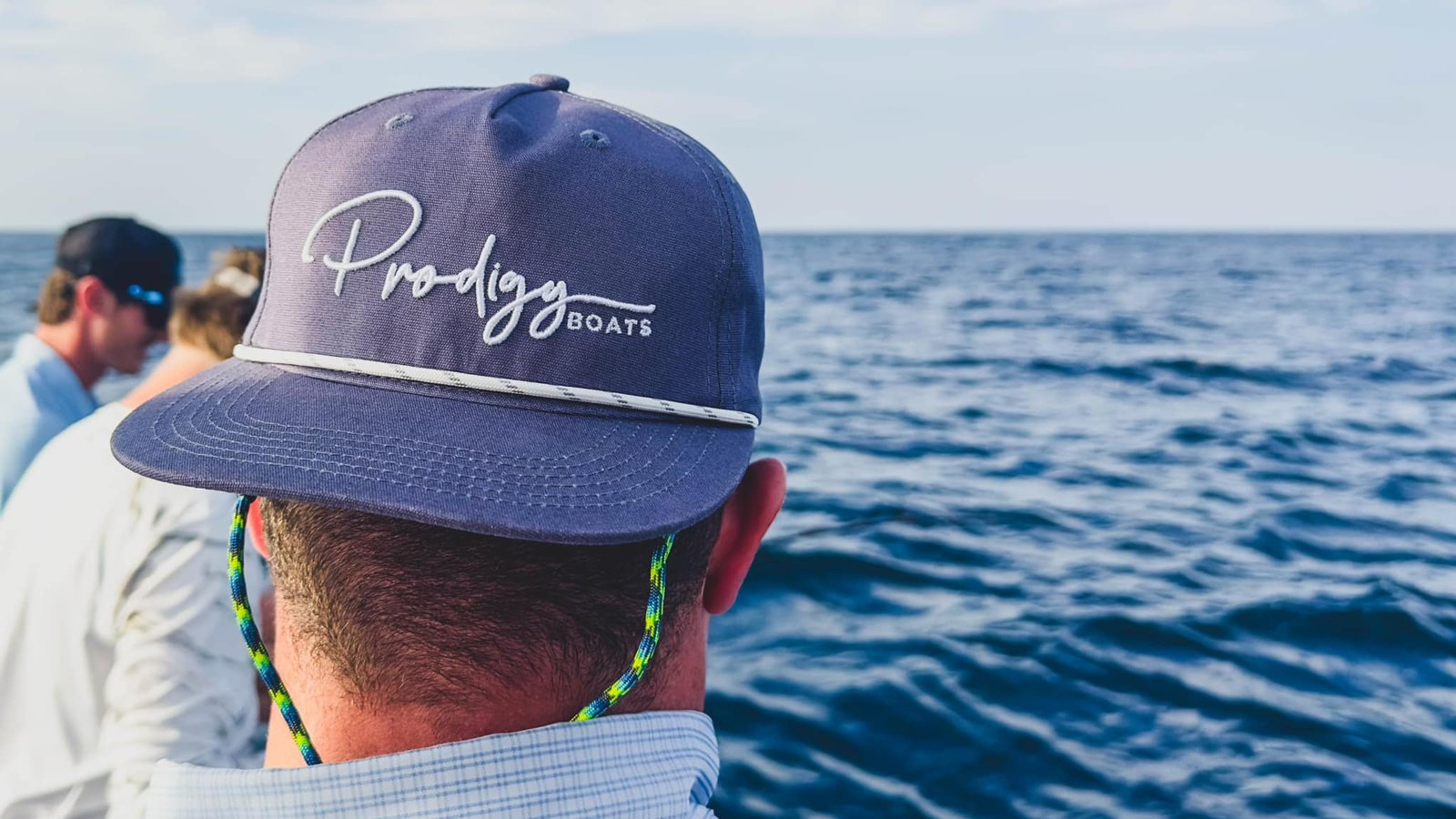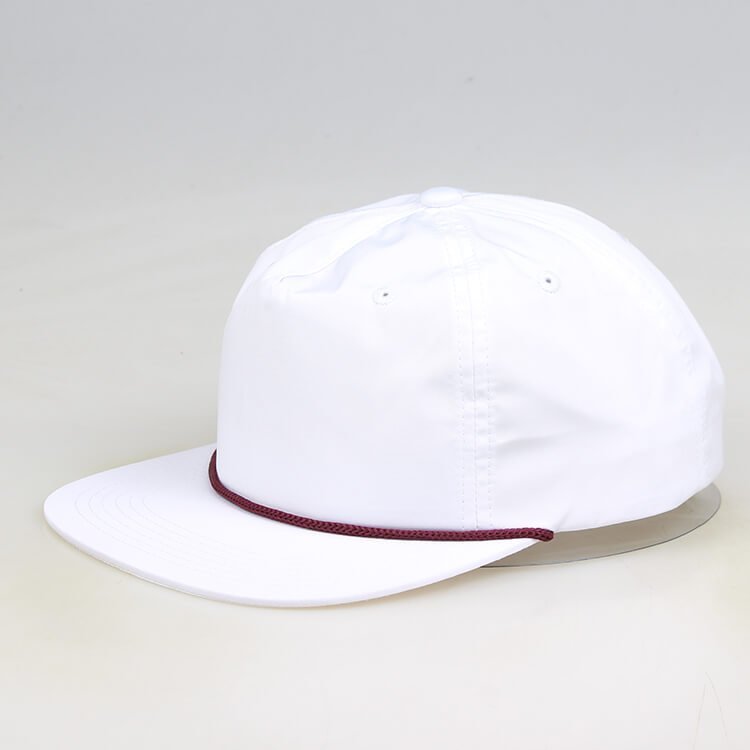Are you considering jumping into the profitable world of selling wholesale rope hats? These fun headwear pieces have a classic-yet-contemporary appeal, and are becoming one of the best-selling hat styles on the market.
Blank wholesale rope hats are a lucrative sales opportunity for sellers, as you can quickly spin up a sales system that allows consumers and retailers to buy in bulk and customize to their heart’s content.
Yet finding high-quality blank rope hats at competitive prices can be a challenge – especially when you throw in the need to differentiate between styles, pick the right materials, and offer the best customization options customers want.
To help you get off on the right foot, we’ve built a guide to selling blank rope hats – from how to source the right hat options to setting up your new rope hat enterprise.
Here are Tips for Selling Blank Rope Hats Wholesale
1. Research and Identify Your Target Market for Rope Hats
Success in selling wholesale rope hats starts with knowing who your potential customers are.
Before you research and contact suppliers or place your first order, you’ll need to analyze which market segments align with your business goals. Fortunately, the rope hat appeals to a wide consumer base due to its being versatile, comfortable, and well-designed.
Who might be in your target audience?
- Fashion boutiques seeking unique headwear options
- Corporate clients looking for customizable branded merchandise
- Outdoor recreation stores catering to fishing and hunting enthusiasts
- Sports teams and athletic organizations
- Tourism and gift shops in vacation destinations
The better your strategy in the beginning, the more likely you are to build a recurring sales cycle with high-paying customers. Don’t skip this key step!
2. Find Reputable Wholesale Rope Cap Suppliers
Sourcing the best rope caps for your business matters, because low-quality hats will ruin your sales reputation fast.
The supplier you choose makes all the difference. Quality manufacturers ensure that the products you receive are crafted with attention to detail and designed to last.
What should you look for in a good hat supplier? Here are some key considerations to keep in mind as you research your options:
- Industry Experience: Suppliers with 10+ years in headwear manufacturing
- Quality Certifications: BSCI approval and other quality assurance credentials
- Sample Policies: Ability to receive samples before large orders
- Customer Testimonials: Positive reviews from other businesses
- Communication: Responsive service and clear production timelines
- Customization Capabilities: Ability to tailor products to your specifications
- Low MOQ Options: Flexibility for businesses of various sizes
3. Understand the Different Types of Blank Rope Hats Available
Once you find your supplier, it’s time to plan out what types of hats you’ll sell. Here are some of the top options – but as always, align your choices with your target consumer!
- Classic rope hats have a rope accent encircling the crown, and are usually available in structured and unstructured options.
- Golf rope hats are designed for outdoor activities, and often have moisture-wicking materials and provide UV protection. The rope detail typically runs along the brim rather than the crown.
- Snapback rope hats combine adjustable snapback closures with rope detailing that offers both form and function.
- 5-panel rope hat designs offer a sleeker profile, while 6-panel constructions provide a more traditional, structured look.
4. Know Hat Sizing and How to Test a Customer’s Size
One of the most important parts of your rope hat sales system is a customer sizing guide and the option to pick different sizes.
Most wholesale rope hats come in standard sizes, but regional variations may exist. European markets prefer a 58cm circumference, while U.S. customers generally require 59cm for optimal fit. Many rope caps feature adjustable closures that accommodate a range of sizes.
Hat Sizing Chart for Rope Hats
| Size | Centimeters | Inches | US Hat Size | Fit |
| S | 53 | 20 1/2 | 6 5/8 | |
| 54 | 21 1/4 | 6 3/4 | ||
| 55 | 21 5/8 | 6 7/8 | ||
| M | 56 | 22 | 7 | |
| 57 | 22 1/2 | 7 1/8 | ||
| 58 | 22 7/8 | 7 1/4 | ||
| L | 59 | 23 1/4 | 7 3/8 | One Size Fits Most |
| 60 | 23 5/8 | 7 1/2 | ||
| 61 | 24 | 7 5/8 | ||
| XL | 62 | 24 1/2 | 7 3/4 | |
| 63 | 24 7/8 | 7 7/8 | ||
| XXL | 64 | 25 1/4 | 8 | |
| 65 | 25 5/8 | 8 1/8 |
Consider creating a simple sizing guide on your checkout page, helping customers choose the perfect fit without trying the hat on physically. For wholesale customers who will be reselling your products, keep this sizing information in your catalog so they can offer it to their customers.
5. Evaluate Product Quality and Materials in Rope Caps
Your wholesale rope hats’ materials and construction quality directly impact customer satisfaction and your reputation as a supplier. The smallest details can make or break your sales success.
Stitching should be even, tight, and reinforced at stress points. Examine the rope attachment – it must be securely fastened to prevent fraying or becoming detached. The best rope caps use high-quality materials throughout their construction, from the outer fabric to the inner sweatband.
When it comes to the sweatband, look for soft, absorbent materials that rest comfortably on the head.
6. Learn How Much Wholesale Rope Hats Typically Cost
Once you’ve researched your customers, hat styles, and material types, you’ll need to land on your pricing structure.
Most blank rope hats wholesale for $2.50-$7.50 per unit, and you’ll usually find volume discounts for larger orders. Here are some of the key elements that go into the overall price of a rope hat:
- Material quality and composition
- Construction complexity and durability
- Brand reputation and manufacturing location
- Customization capabilities
- Minimum order quantities (lower MOQs often command higher unit prices)
When comparing options, consider the total cost of ownership rather than just the upfront price. Remember that cheaper hats that need frequent replacement – which may cost more in the long run.
Always check whether quoted prices include shipping and customs fees, especially when sourcing internationally. Some suppliers advertise low base prices but add significant surcharges later in the process.
7. Keep an Eye on Current Style and Market Trends for Rope Caps
Follow industry publications, fashion blogs, and social media influencers to understand what styles customers currently love. Pay particular attention to the target audience of these hats: outdoor enthusiasts, golfers, and style-conscious consumers typically drive the style changes over time.
Remember that while trends can give you an idea of what to sell, you can’t go wrong with classic styles in brown, white, and black.
8. Factor in Budget Constraints and Supplier Turnaround Time
Knowing what to charge is only part of the equation. As a rope hat wholesale seller, you’ll want to keep an eye on your inventory management. This involves balancing your financial limitations with production realities.
Supplier lead times may range from 15-45 days depending on order volume, customization requirements, and manufacturing location. During peak seasons (before summer or holiday periods), the timeframe may extend further.
To learn what to expect with a particular supplier, you may start with smaller orders despite potentially higher unit costs. This approach lets you verify quality and reliability before committing larger amounts.
9. Negotiate Pricing and Minimum-Order Quantities (MOQs)
A good negotiation can improve your profit margins when sourcing wholesale rope hats. While many suppliers post standard pricing and minimum requirements, most have flexibility for serious buyers who want to build strong, ongoing relationships.
Start by requesting tiered pricing structures that reward increased order volumes. Many manufacturers offer substantial discounts at key quantity thresholds (50, 100, 250, 500+ units).
If you’re just starting out, inquire about lower MOQs before committing to larger quantities to test the market. Some suppliers offer introductory programs specifically designed for new businesses.
10. Make Time for Trade Shows and Industry Exhibitions
Want to stay ahead of any changes in the rope hat sales world? Make sure you take time to visit trade shows and exhibitions within the industry.
These shows usually offer tons of great advice and insight into how you can boost your sales potential – as well as other areas you may want to consider expanding into over time as your business grows
While attending these events may require a bit of investment in travel and registration fees, the connections and knowledge gained are well worth the effort!
11. Build Long-Term Relationships with Key Suppliers
If you want to succeed as a wholesale rope hat business, you need to keep your relationship with suppliers strong. These go far beyond just transactions, and can help you build a long-term business relationship with these and future suppliers.
Make sure that your established customers get preferential treatment when production periods get busy. Suppliers are often more than willing to accommodate any special requests from reliable partners, as strong relationships often translate to long-term profit for everyone involved.
12. Explore International Supplier Options When Appropriate
While domestic suppliers offer advantages in communication ease and shipping speed, international rope hat manufacturers often provide compelling benefits worth considering.
You’ll want to pay close attention to changes in import-export policies, as well as tariffs and other macroeconomic realities. When you start looking at international suppliers, consider working with those that have:
- English-speaking account representatives
- U.S. or European quality standards certifications
- Transparent production tracking systems
- Established shipping and customs clearance procedures
13. Review Suppliers’ Return and Exchange Policies
Before you finalize any of your wholesale rope hat orders, take the time to go through your supplier’s policies with a fine-toothed comb. Look at policies regarding returns, exchanges, and quality issues. The last thing you want to do is establish a contract or large order and get caught in a situation where you can’t return defective items or request changes.
Request all policy details in writing as part of your purchase agreement. These are essential if you run into any obstacles in the process.
14. Track Your Sales Data and Analyze Performance to Refine Future Orders
Running a successful wholesale rope hat business isn’t just about supply and demand. You’ll need to have a system in place by which you can track performance and measure against your sales expectations.
Remember: what gets measured gets improved. Consider creating and tracking metrics for each rope hat style:
- Sell-through rate: How quickly inventory sells compared to other styles
- Profit margin: Not just revenue, but actual profitability per unit
- Customer feedback: Both positive comments and complaints
- Return rates: Identify any quality or sizing issues
- Seasonal performance: Note how styles perform across different times of year
You’ll find that many inventory management systems make data collection and analysis easy, many of which use AI to give you an upper hand in making decisions based on results.
Review performance data quarterly, and always before placing significant restock orders. This will help you align your inventory with customer and client demands and prevent overordering issues.
Your Lucrative Wholesale Rope Hat Business Awaits!
The wholesale rope hat market has tons of potential for entrepreneurs who are willing to put in the time and effort. You’ll want to move through the above steps carefully and be willing to adjust and adapt your processes as you go.
Always look for quality suppliers, and invest in the best materials to boost client and customer satisfaction. This will help you build a reputation as a reliable seller, which is far more valuable in the long run than cutting corners or shortcuts.
Approach your wholesale rope hat business as an enterprise that is always changing along with the market. Analyze performance, refine your offering, and work to keep your supplier relationships strong. Over time, you’ll build a sustainable business that delivers quality for customers and high profits for you!







